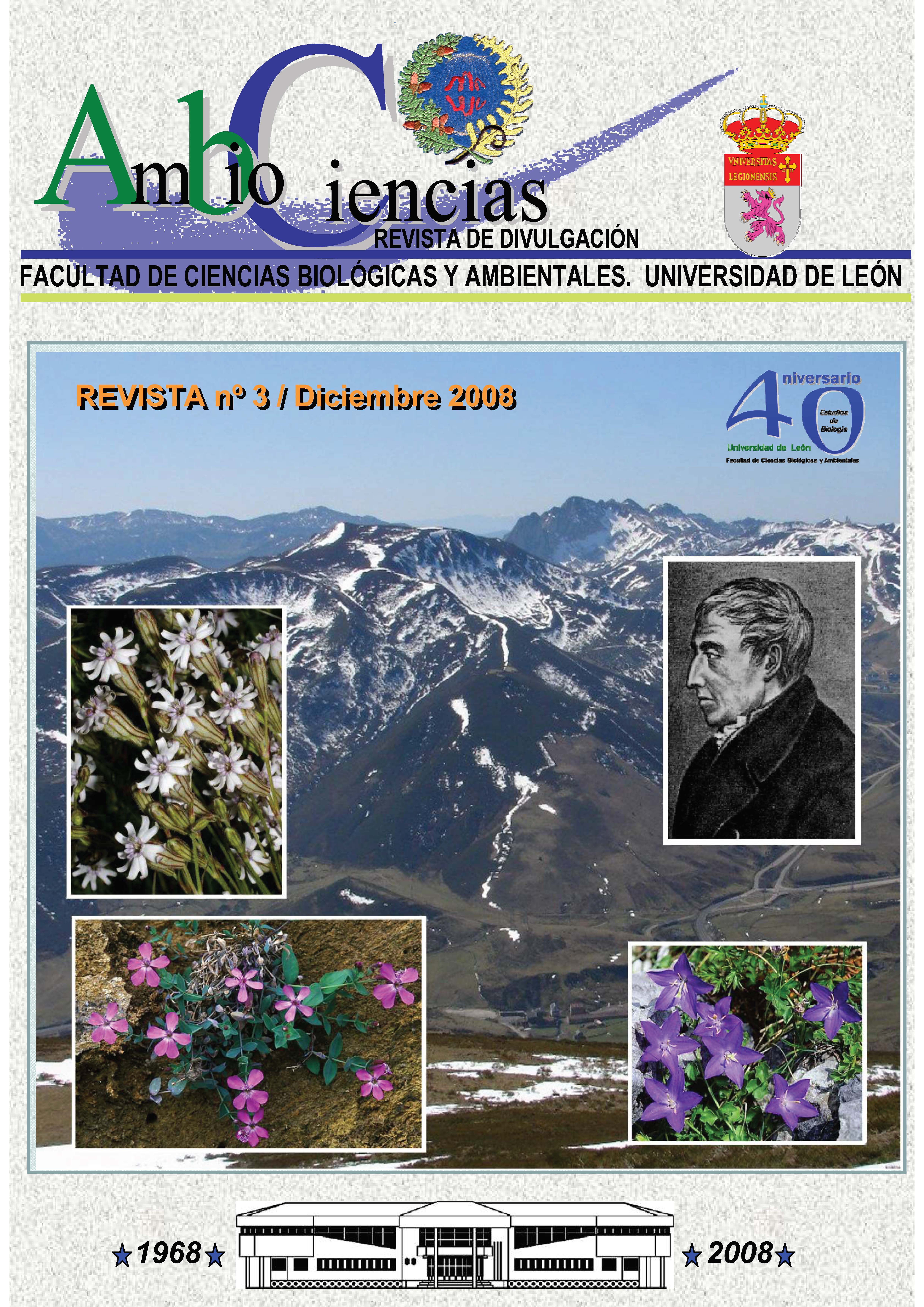Astrobiología: una visión global
DOI:
https://doi.org/10.18002/ambioc.v0i3.4881Palabras clave:
Astronomía, Biología, Química, Exogénesis, Meteoritos, Exobiología, Astrobiología,Resumen
La Astrobiología es la parte de la Astronomía que busca respuesta a preguntas tales como el origen de la vida o la posibilidad de encontrar seres vivos en otros lugares del Universo. Se trata de una ciencia interdisciplinar que se desarrolla aunando la mayoría de las ramas de experimentales del conocimiento, estando sobre todo relacionada con la Astronomía, la Biología y la Química. Debido a su creciente influencia sobre el panorama científico actual existen centros especializados en Astrobiología que incluyen departamentos de extremofilia, geología, ecología y evolución molecular. Por otro lado, la mejora de las técnicas de análisis y los conocimientos que se adquieren sobre sistemas extraterrestres contribuyen al avancede una disciplina con un futuro muy prometedorDescargas
Citas
Anand, M., Russel, S. (2006) Searching for signatures of life on Mars: an Fe-isotope perspective. Phil. Trans. R. Soc. B. 361:1715–1720.
Bernal, J. D. (1968) The relation of microscopic structure to molecular structure. Q. Rev. Biophys. 1:81–7.
Bernstein, M. (2006) Prebiotic materials from on and off the early Earth. Phil. Trans. R. Soc. B. 361:1689–1702.
Emlen, S.T. (1966) A technique for recording migratory orientation of captive birds. Auk. 83:361-367.
Emlen, S.T. (1969) The celestial guidance system of a migratory bird. Sky Telesc. 38:3- 6.
Emlen, S.T. (1970) Celestial rotation: its importance in the development of migratory orientation. Science 170:1198-1201.
Gilbert, W. (1986) The RNA World. Nature 319: 618.
Huber, C., Wächterhäuser, G. (1998) Peptides by activation of amino acids with CO on (Ni, Fe)S surfaces: implications for the origin of life. Science 281: 670-672.
Keeton, W. (1971). Magnets interfere with pigeon homing. Proc. Natl. Acad. Sci. USA 68: 102-106.
Keeton, W. (1972) Effects of magnets on pigeon homing. En Animal Orientation and Navigation, pp. 579-594.
Keeton, W., Larkin, T.S., Windsor, D.M. (1974). Normal fluctuations in the Earth’s magnetic field influence pigeon orientation. J. Comp. Physiol. 95: 95-103.
Leach, S., Smith, I., Cockell, C. (2006) Introduction: conditions for the emergence of life on the early Earth. Phil. Trans. R. Soc. B. 361:1675–1679.
Lu, Y., Freeland, S. (2006) On the evolution of the standard amino-acid alphabet. Genome Biol. 7:102.
Luengo, J.M. (2002) The Convergence-Divergence Hypothesis. World Futures 58:45- 60.
Martins, Z. et al. (2008) Extraterrestrial nucleobases in the Murchison meteorite". Earth Planet. Sci. Lett. 270:130-136.
Miller, S.L. (1953) Production of Amino Acids Under Possible Primitive Earth Conditions. Science 117: 528.
Rummel J.D. (2001) Planetary exploration in the time of astrobiology: Protecting against biological contamination. Proc. Natl. Acad. Sci. USA 98:2128-2131.
Trainer, M., Pavlov, A. (2006) Organic haze on Titan and the early Earth. Proc. Natl. Acad. Sci. USA 103:18035-18042.
Descargas
Publicado
Cómo citar
Número
Sección
Licencia
Derechos de autor 2008 Javier Gutiérrez Fernández, Sergio Valbuena Álvarez

Esta obra está bajo una licencia internacional Creative Commons Atribución-NoComercial-CompartirIgual 4.0.
Los autores que publican en esta revista están de acuerdo con los siguientes términos:
- Los autores ceden de forma no exclusiva los derechos de explotación (reproducción, distribución, comunicación pública, transformación) a la Universidad de León, por lo que pueden establecer, por separado, acuerdos adicionales para la distribución no exclusiva de la versión de la obra publicada en la revista (por ejemplo, alojarlo en un repositorio institucional o publicarlo en un libro), con un reconocimiento de su publicación inicial en esta revista.
- Este trabajo se encuentra bajo la Creative Commons Attribution-NonCommercial-ShareAlike 4.0 International License. Puede consultarse desde aquí la versión informativa y el texto legal de la licencia.
- Se permite y se anima a los autores a difundir electrónicamente las versiones pre-print (versión antes de ser evaluada) y/o post-print (versión evaluada y aceptada para su publicación) de sus obras antes de su publicación, ya que favorece su circulación y difusión más temprana y con ello un posible aumento en su citación y alcance entre la comunidad académica.







